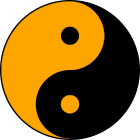Warning! Technical article. Lots of data and numbers and not funny.
Last year we wrote about our regenerative electricity production and about our Aquair towed generator which we use as a second wind generator. As long as the wind blew everything was working perfectly but when it stopped (as in Columbia) then we realized that our batteries were no longer working properly and the solar was under-dimensioned especially with our water maker now running. There were even a few days that we had to run the engine and that is awful.
So, while in Panama, we rebuilt and rewired things again.

The HRDi controller from Marlec regulates the power from the wind generator and can optionally work as a controller for 160 Watts of solar panels. It works but lacks an absorption phase during the charging which is not good for the batteries. Additionally only 12V modules can be connected which is not enough to allow the MPPT (max. power point tracking) to function efficiently early and late in the day or when the sky is overcast. We bought a Victron Energy SmartSolar 30/100 which has a three phase charging algorithm and can deal with a higher voltage. Really nice is the Bluetooth connection which allows us to see the actual and historical data on the smartphone.

We doubled our solar power by buying two new 80 Watt panels from a Chinese electrical store. With four panels rated at a total of 320 Watts, we could connect two strings of two panels and thus double the voltage available to the controller. All four panels are mounted and wired above the cockpit and nicely hidden from below by the bikini sun cover.
Our batteries were sourced by Ardfern Yacht Center two years ago and, according to the manufacturer, were unsuited for use in a regenerative energy system. They were not deep cycle batteries and were not helped by the few times we ran them nearly empty. The lack of an absorption charge phase in the controller also shortened their life. We bought three deep cycle marine batteries – two for the services and one just to start the engine – manufactured by East Penn. They have a great document that describes which charging voltages to use and a competent and quick customer support who actually answer emails and wrote that we should use a float voltage of 13.8V and absorption of 14.7V.
 The batteries are Deka DC31DT Marine Master manufactured by East Penn. Their data sheet for regenerative systems is online here. Gabriel Schneck is their great customer support person who helped us.
The batteries are Deka DC31DT Marine Master manufactured by East Penn. Their data sheet for regenerative systems is online here. Gabriel Schneck is their great customer support person who helped us.In Panama the system worked well despite us being anchored facing north and thus with shadow on the panels. Sailing south to Ecuador we produced 1400Wh of solar power one day and the next day – with absolutely no sun – 360Wh but our average after 33 days is about 700Wh. Each wind generator produces an average per day of about 200Wh and when on passage the towed generator produces between 150 and 800Wh depending on our speed.

The first month suggests that we are now self sufficient in electricity and therefore also water production. Another piece of freedom.


Super